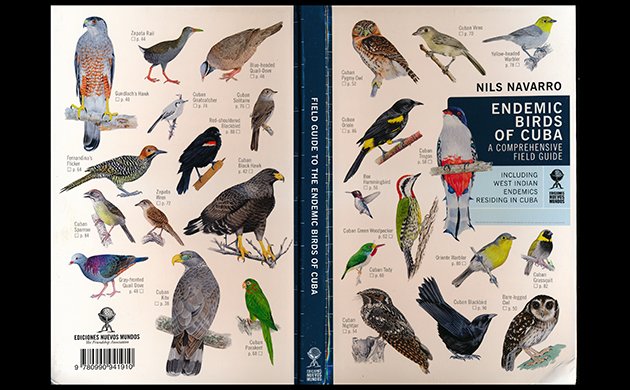
Cuba is on my mind. It’s probably on your mind too, especially if you live in the United States. 26 endemics! Bee Hummingbird, the smallest hummingbird in the world! Cuban Black Hawk, split in 2007 from Common Black Hawk! Fernandina’s Flicker, a tongue-twisting alliterative name for one of the most endangered woodpeckers in the world! Cuban Trogon, the national bird who wears the colors of the Cuban flag! There is an island of fascinating birds out there, and I want to see them all.
U.S. birders have been able to visit Cuba as part of survey groups and cultural exchanges for years, but those trips have been few in number and not always easy to find. With the recent opening of travel restrictions, the options for birding the “forbidden” island have increased and Cuba has changed from a “maybe, if…” to a “yes!” birding destination.* So, it’s a good thing that Ediciones Nuevos Mundo, the publishing arm of The Friendship Association, published Endemic Birds of Cuba: A Comprehensive Guide by Nils Navarro, Cuban wildlife artist and naturalist, earlier this year. (The Friendship Association is a nonprofit that encourages and sponsors educational and cultural connections between the U.S. and Cuba.)
The full name of this unique volume is Endemic Birds of Cuba: A Comprehensive Guide Including West Indian Endemics Living in Cuba. It covers the 26 endemic birds of Cuba (27 if you count the extinct Cuban Macaw), plus 22 West Indian endemic birds found in Cuba. Navarro also gives an FAQ on birding the island (including a list of “essential birdwatching sites”), an introduction to Cuba’s habitats, and a chapter on the conservation status of Cuba’s threatened birds. Navarro’s exceptional drawings illustrate the species accounts. Photographs of birds, plants, habitats, and birds in habitats, by Navarro and four colleagues, illustrate the introductory, habitat, and conservation chapters. Design and layout are by Pepe Nieto; James W. Wiley served as Scientific Consultant; and Loyda Sánchez did the English translation. It is a lovely, well-packaged, informative guide, created with thought and creativity.
Forty-eight species. There is a sense of luxury in having so much space per bird. The 26 Cuban endemics are shown in 2-page spreads that allow for large drawings, icons and silhouettes, and a page of descriptive text. There is even room for notes. (Except for the extinct Cuban Macaw.) Each species account starts with names–family name at the top of the page, followed below by English name of the species, alpha code, scientific name, local name in Cuba and the standard name as accepted by the Sociedad Española de Ornitología (SEO).
The text covers Identification (size, physical description for adult and juvenile, with sexual differences noted if necessary, behavioral features that aid in identification); Voice (transliterations); Geographic Variation (for relevant species); Similar Species; Status, Distribution, and Habitats (specific areas of the island are named here, supplementing the small map icon); Feeding; Nesting; and Reference Localities (specific sites where the bird can be found, with West, Central, and Eastern areas and provinces noted). The information here is more extensive than what is offered in Field Guide to the Birds of Cuba by Orlando H. Garrido and Arturo Kirkconnell (Cornell Univ. Press, 2000), and updated in terms of taxonomy, status, and distribution.
Navarro’s background is in art (he has a degree in Fine Arts with a focus on painting), and this shows in the illustrations. They combine the field guide requirement to show a bird’s structure, shape, and plumage with an artistic sense of grace and elegant composition. Colors range from the subtle (just look at the Cuban Gnatcatcher with its varying shades of gray) to the startling striking. Compare, for example, the species account illustration of the Cuban Trogon with the photo that opens up the introductory chapter. Navarro has masterfully captured the iridescent nature of the bird’s reds, blues and greens, while at the same time adjusting its pose to one that contrasts its white and red front parts with its blue-black-with-white-spots wings.
Rather than painting all bird images to face the same direction, as is customary in many field guides, the Navarro combines images of the bird looking left, right, up, even right at you, the sums of the images creating compositions of diagonal lines, circles, and mirror images. The number of illustrations per species account varies from three to seven, depending on the need for illustrating gender and age differences. The luxury of space means that each species can be shown from various angles and in distinctive poses. Only the Cuban Black Hawk, Bee Hummingbird, Cuban Macaw, and Cuban Parakeet are depicted in flight. Most birds are depicted perched on a typical tree branch or trunk, the exceptions being ground foragers like the two Quail-Doves, Fernandina’s Flicker, and the elusive Zapata Rail.
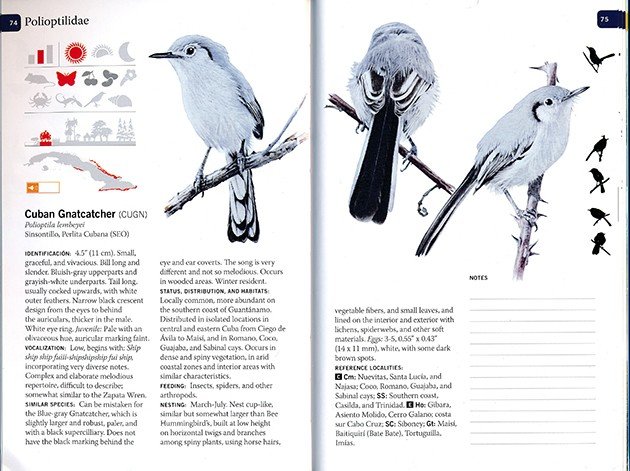
Navarro employs a visual system for quickly delivering information on each species, similar to the icon system used in The Warbler Guide. All you need to do is look at the upper left-hand corner to find out level of abundance, time of day or night when the bird is active, primary and secondary food sources, geographic distribution, and habitat. The icons are explained on the inside back-cover flap. So, I know immediately that the Cuban Gnatcatcher is abundant at the “medium” level, active during the day, eats insects, can be found in coastal forests on the southern coast, and in small areas on the eastern and central coasts. For endangered species, red and gray tabs at the top of the page indicate level of threatened status from the IUCN and the Libro Rogo de los Vertebrados Cubanos (Red Data Book for Cuban Vertebrates). Silhouettes along the border of the right-hand page depict the shape of the bird from different angles (a huge aid to those of us who end up with photos against the light).
The icons are a great visual shorthand, but I wish the introduction offered more explanation about what each icon means. What exactly does medium-level abundance represent? That the bird will sometimes be seen in its habitat? And, the “coastal forest” icon clearly combines both forest and thicket habitats (which are described separately in the Habitat chapter), because the written description makes clear that Cuban Gnatcatchers are found in thickets, not forests. So, get your first impression of the bird from the icons, but make sure you read the text for the details.
The field guide was conceived by Navarro as a book with two purposes: “an interactive field guide…a book printed on paper, designed according to the practical needs of those who do field biology as well as for birdwatchers who simply find pleasure in the careful observation of nature” (Foreward). This means that it has some interesting features, which may or may not work in practice. The book includes lots of space for Notes. There are pages for noting Important Dates (as in species migrating, mating, nesting, etc.) and Contacts. And, each species account includes a place “for noting the number of each birdcall recording, if available,” a small graphic that I originally found very puzzling. (Actually, I thought I could press it and hear a bird call, till I remembered that this was a book not a web page.)
Another feature that may be related to its purpose as a practical field guide is the cover design (front and back), which functions as both a colorful, inviting cover, and as an index to the species accounts, with name and page number attached to each illustration and a ruler running down the spine. This is an interesting and, as far as I know, original idea. I’m not sure how it will work out in practice. If I were using this book in the field, some kind of sturdy transparent book cover would be a necessity; otherwise, it wouldn’t take long for the cover to be so covered in smudges and water splashes that it would be impossible to read. But, that is me.
The section on West Indian Endemics Residing in Cuba gives a more traditional treatment to these birds, combining five to six on a 2-page spread. Descriptions are similarly compressed–no icons or silhouettes or physical descriptions. I did learn that not every bird with “Cuban” in the name is a Cuban endemic. Cuban Parrot, Cuban Emerald, Cuban Pewee, Cuban Crow, Cuban Bullfinch are all species found in Cuba and other islands, though the dividing line between endemic and near-endemic appears to be very thin in some instances (Giant Kingbird has probably been extirpated from the Bahama Islands, for example, making this species a future candidate for the title).
Out of the 564 species found in the islands of the West Indies, 106 are endemic to the region. That’s almost 20 percent! Such are the consequences of island geography. Sadly, another consequence of island geography is that many of these endemic birds are dwindling in number, some already extirpated or extinct. The chapter on Conservation Status offers what might be called ‘Threatened Species Accounts’ for each of the 21 endemic threatened birds of the West Indies, including the critically endangered Zapata Rail, the endangered Zapata Wren, the vulnerable Fernandina’s Flicker, and the near-threatened Bee Hummingbird. Each account gives population estimate, population trend, estimated area, endemism level, reasons why the species is threatened, and conservation measures adopted and proposed. In addition to habitat loss, extreme weather, invasive species, hunting, and the illegal capture of birds for pet markets are major contributing factors. Hopefully, one of the consequences of increased nature tourism in Cuba will be a heightened awareness of the fragility of these birds’ existence and increased support for their study and protection.
The concluding chapter offers a mix of resource materials and finding aids. The three, highly detailed maps of Cuba and Isla de la Juventud show geographic areas, main roads, birding sites, beaches, and gas stations (a reminder that traveling in Cuba may not be simple). The Index of Localities helps locate a specific city or tourist area on the maps. A “Checklist of Cuban and other West Indian endemic birds residing in the Cuban archipelago” combines the 47 species (Macaw not included) into one taxonomic list, with endemics in bold print.
The Index of Species could be better. Species are indexed by English name, scientific name, local names and SEO name, a diverse number of reference points. Yet, it is still difficult to locate the bird you are looking for if you don’t know the exact English name or scientific, local, or SEO name. (It is possible that this is the result of the translation.) Also, the index does not bold the page numbers of the species accounts. It took me several readings before I remembered that I’m supposed to be using the cover index for this purpose. But–bolding would have been helpful and I hope it’s considered for the next edition.
The main question when considering whether or not to purchase Endemic Birds of Cuba is this: Considering that the book covers only 48 of the 371 species documented in Cuba, is it a necessary purchase?
Three field guides cover all the birds of Cuba: (a) Field Guide to the Birds of Cuba by Orlando H. Garrido and Arturo Kirkconnell, with illustrations by Román F. Compañy, published in 2000 and covering 354 species and 21 endemics; (b) the Spanish-language translation, Aves de Cuba, updated by Cornell Lab of Ornithology’s Neotropical Conservation Initiative in 2011 to cover 369 bird species and 26 endemics; (3) Birds of the West Indies by Herbert A. Raffaele, James, Wiley, Orlando H. Garrido, et al., published by Princeton Univ. Press in 2003. It would be helpful if Cornell University Press incorporated the updates it did for the Spanish edition into the original English edition of Field Guide to the Birds of Cuba. There is certainly an audience for an updated guide. In the meantime, travelers will need to make do with either outdated English-language guides or an updated Spanish-language translation.
To answer my own question, Endemic Birds of Cuba: A Comprehensive Field Guide is not an absolutely necessary purchase. But I think a birder would miss out on a lot if she did not purchase and study it. Because, let’s face it, if you are going to bird Cuba, you want to see those endemics, they are the target birds. And, the comprehensive field guides do not have the artwork or the in-depth, up-to-date descriptions of Endemic Birds of Cuba. The modern, pragmatic organization of the species accounts and the sections on habitat and conservation add to the guide’s usefulness. And, it is beautiful to look at.
Nils Navarro Pacheco is described in the book’s bio as a wildlife artist and illustrator, with employment experience as a taxonomist and curator for a museum herpetology collection, and current passions for conservation and helping young wildlife artists in the Caribbean and Latin America. He leads the Wildlife Art Working Group of BirdsCaribbean, and contributes his art to conservation organizations for fundraising. (One of these organizations is the American Birding Association’s Birder Exchange.) I would love to learn more about how Navarro put this field guide together, and I hope he is able to make additional visits to the United States (I know he spoke at the Fairchild Birding Festival in Florida last month) to talk about his work. It’s time to bird Cuba and it is time to learn more about Cuban naturalists.
* This New York Times article summarizes the current status of travel to Cuba. We still can’t just buy a plane ticket and go. U.S. citizens must qualify for one of 12 categories permitted by general license. These categories include family visits; professional research and professional meetings; educational activities; religious activities; and humanitarian projects. In addition, there are still restrictions on using credit cards and spending money on the island.
—————————
Endemic Birds of Cuba: A Comprehensive Field Guide
by Nils Navarro
Ediciones Nuevos Mundos, 2015. Flexibound, 168 pages.
Language: English
ISBN-10: 0990941914; ISBN-13: 978-0990941910
Product Dimensions: 8.5 x 5.5 x 0.5 inches
Also available in Spanish: Aves Endémicas de Cuba: Guía de Campo.
ISBN-10: 0990941906; ISBN-13: 978-0990941903
$25.00
Available for purchase directly from Ediciones Nuevos Mundos, the publishing arm of The Friendship Association and from Buteo Books.


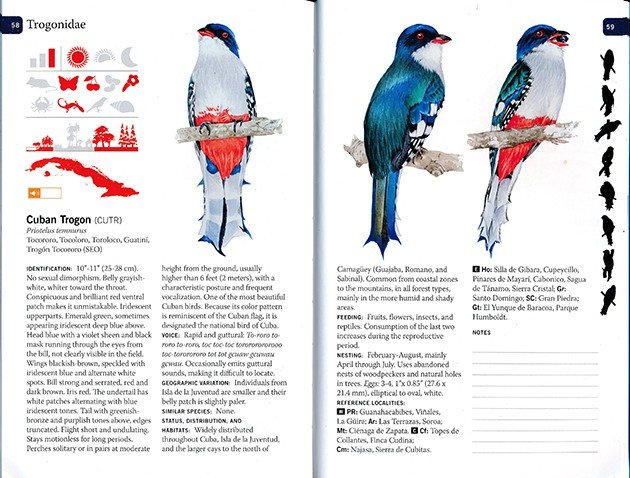
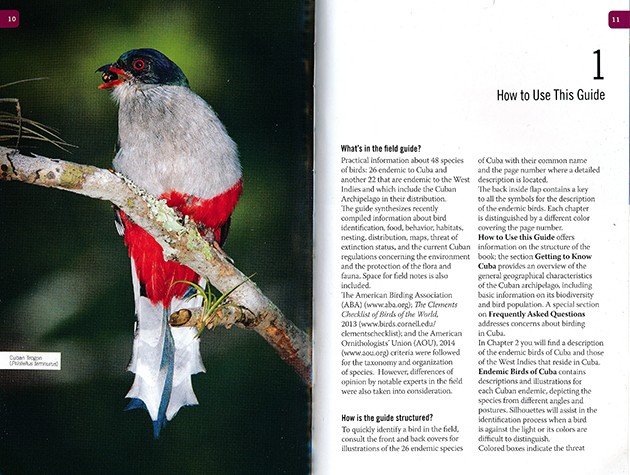
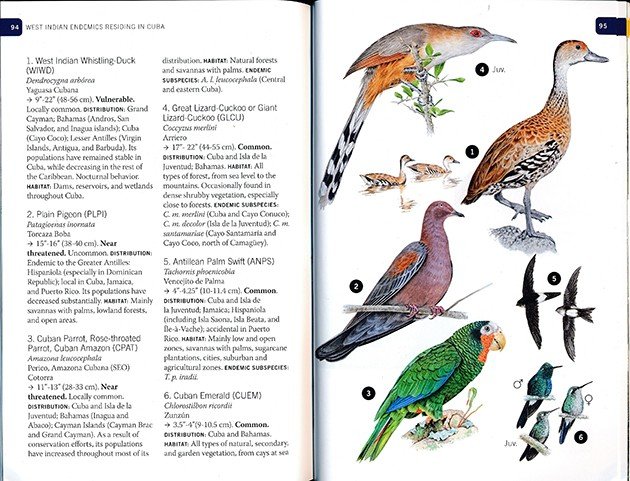
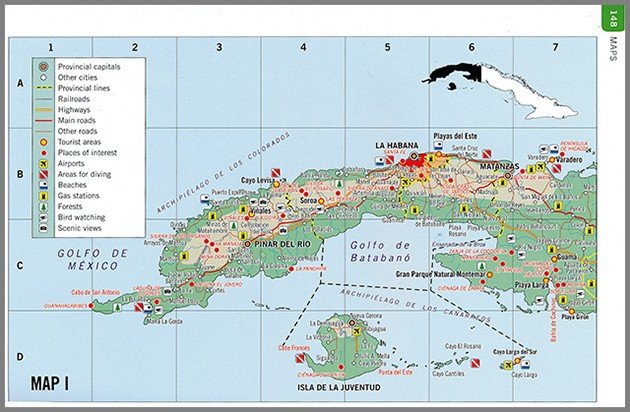











I’m on the Board that gets the Space Coast Birding Festival going each year and found the article above quite timely. Thank you Cory for the great PR!!!!!!!! And, the awesome pictures 🙂 I’m hoping there is someone out there who can provide a good contact for a birding/photography trip to Cuba in March 2016. Those that I’ve found so far seem overpriced compared to other birding trips I’ve taken in central america. All insight would be greatly appreciated.
Sue
Hi Sue–Glad you enjoyed my review. I’ve never had the chance to attend the Space Coast Birding Festival, but I know Corey is really looking forward to going back in January. Brevard County is Great Birding.
I agree, the birding/photography tours from the U.S. are all expensive. I don’t know how the costs break down, but I suspect there are costs involved that you don’t have for other Caribbean islands or Central America. For example, many tours need to charter a plane from Miami to Cuba; at this point in time, it is still not a destination for commercial airlines. It looks like there are also ground costs, like the license, commissions to agencies, etc., It will be interesting to see if the price of a birding tour goes down in the next few years.
Hi Donna – thanks for your reply! The birding trip I looked at didn’t include airfare but had it, I would of thought it was a good price 🙂 Have you been to Cuba on a birding trip yet? Any advice on who to work with? Thanks!
Sue
Hi Sue,
I just found this review and noted your question. We/ BirdsCaribbean are leading bird tours to Cuba – we just completed our first tour last month; our next tour is March 6 to 16, 2016 – there is still one space left if you want to join us! Please visit this webpage to download the itinerary and register for the trip. http://www.birdscaribbean.org/2015/11/birding-tours-of-cuba-in-2016-from-birdscaribbean/
Time is of the essence to jump on this trip! Any questions, don’t hesitate to contact me. We will have more trips to Cuba in 2017 (January and March) and will be advertising those soon. We are the bird conservation organization in the Caribbean region and have the inside track on the best birding sites – our tours include visits with Cuban ornithologists, including time at Nils’ home in Viñales. Best wishes, Lisa Sorenson, Executive Director, BirdsCaribbean